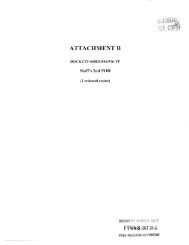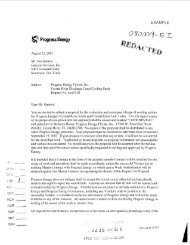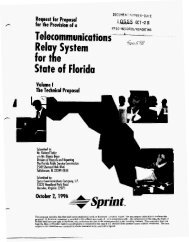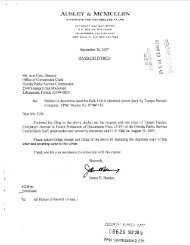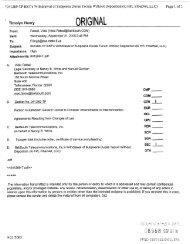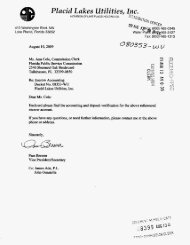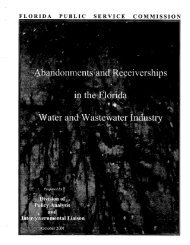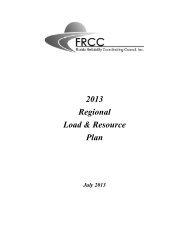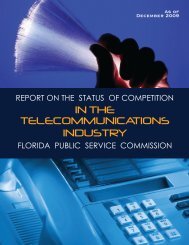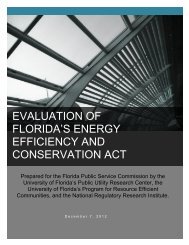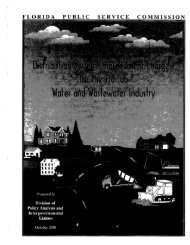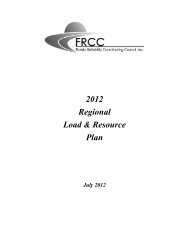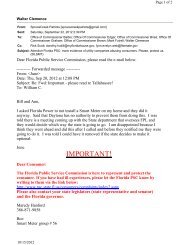Review of 2008 Ten-Year Site Plans - Public Service Commission
Review of 2008 Ten-Year Site Plans - Public Service Commission
Review of 2008 Ten-Year Site Plans - Public Service Commission
You also want an ePaper? Increase the reach of your titles
YUMPU automatically turns print PDFs into web optimized ePapers that Google loves.
15 percent every year within the planning period, this figure indicates that the utilities have planned<br />
sufficient generation to meet reliability standards. As previously discussed, utilities may defer several<br />
planned capacity additions. Figure 12 below does not reflect these potential changes.<br />
Although the 20 percent reserve margin employed by FPL, PEF, and TECO provides<br />
increased reliability to the state’s system, it is paramount that, in an era <strong>of</strong> rising rates, utilities should<br />
study all options available to mitigate price increases, including possible modification <strong>of</strong> current<br />
planning criterion.<br />
Also illustrated in Figure 12 below is the contribution <strong>of</strong> dispatchable DSM (load management<br />
and interruptible load) to the region’s reserve margin. Although the FRCC currently has no standards<br />
which limit what percentage <strong>of</strong> the reserve margin can come from DSM, utilities have found that<br />
when interruptible load is called on frequently, customers are more likely to leave the program. The<br />
sudden loss <strong>of</strong> DSM participants can lead to a less reliable system, so utilities must balance DSM and<br />
generation.<br />
Coal<br />
Reserve Margin<br />
30%<br />
25%<br />
20%<br />
15%<br />
10%<br />
5%<br />
0%<br />
Figure 12. Summer Peninsular Reserve Margin Projections<br />
<strong>2008</strong> 2009 2010 2011 2012 2013 2014 2015 2016 2017<br />
Without Dispatchable DSM With Dispatchable DSM<br />
Florida’s utilities proposed several coal-fired power plants in recent ten-year site plans in an<br />
effort to balance the state’s fuel supply. Fuel cost uncertainties, high capital costs, and uncertainties<br />
regarding potential expenses related to future carbon emission regulations were all cited as concerns as<br />
more than 3,500 MW <strong>of</strong> coal-fired generation additions were canceled. Despite initial opposition,<br />
Seminole Electric Cooperative received final certification <strong>of</strong> Seminole Unit 3, a 750 MW coal-fired<br />
power plant, on June 13, <strong>2008</strong>. Seminole Unit 3 has an in-service date <strong>of</strong> May 2014, and represents<br />
the only planned coal-fired generation capacity addition in Florida.<br />
<strong>Review</strong> <strong>of</strong> <strong>2008</strong> <strong>Ten</strong>-<strong>Year</strong> <strong>Site</strong> <strong>Plans</strong> - 24 -



